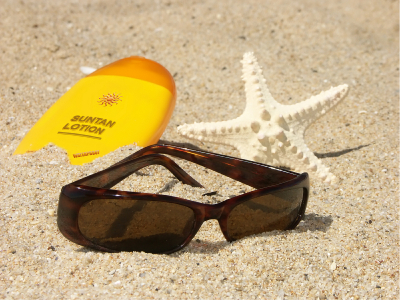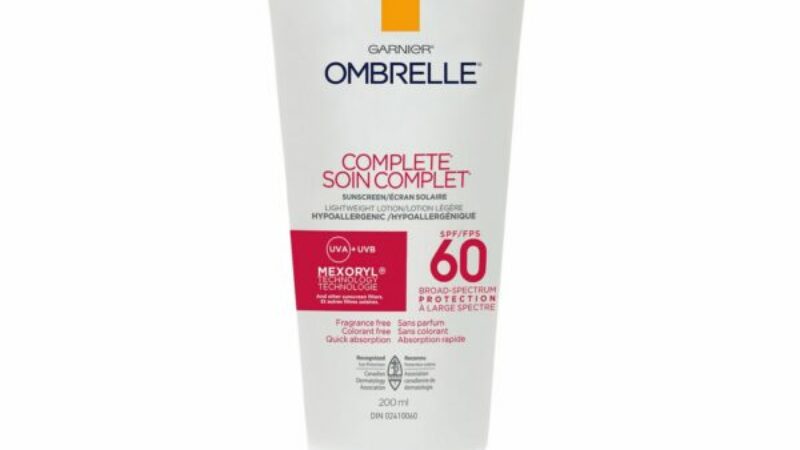With an ever-growing array of sunscreen products, it’s easy to get confused about what to buy. Products may contain Mexoryl, Titanium Dioxide, Zinc Oxide (micronized, nanoparticles…), Avobenzone, Octisalate, Octocrylene, Tinosorb… the list goes on.
Most of us now know to look for “broad spectrum” protection, those products that deliver protection against both UVA and UVB rays. And there are a range of effective brands to choose from, including Anthelios and Ombrelle with their patented filtering systems that contain Titanium Dioxide, Mexoryl SX, Mexoryl XL and Avobenzone (Parsol 1789) stabilized with Octocrylene.
Once you’ve debated about whether to choose a natural or chemical sunscreen, and which brand to buy, how do you decide how much protection you need? SPF, or sun protection factor ratings apply only to UVB rays, those rays responsible for sunburn and some types of skin cancer. We also know that UVA rays play a role in skin cancer too, as well as some of the undesirable effects that long term exposure to the sun may cause – wrinkles, age spots and sagging, leathery skin, amongst them.
Many skin care specialists will recommend a minimum of SPF 15 which blocks about 93 percent of UVB rays. Others, myself included, recommend a minimum of SPF 30, thereby blocking around 97 percent of UVB rays. Going higher in SPF rating won’t block that much more. Studies suggest that a sunscreen with an SPF 60 rating blocks around 99% of the UVB rays.
Do we apply enough?
But, consider this. A recent study showed that most of us don’t apply enough sunscreen to protect us as much as the label on the bottle indicates. In fact, the study showed that the majority of sunscreen users only apply between 20 and 50% of the amount that delivered the SPF rating in a lab. That means that if you’re wearing a sunscreen with an SPF of 30 that you may only be getting protection of between 6 and 15. An SPF of 60 applied incorrectly will only deliver protection of between 12 and 30!
Also don’t assume that SPF 60 will protect you twice as long as 30. Unlike the vast variation between SPF 5 and 15, the difference between 30 and higher numbers is minimal. Yet many dermatologists do recommend an SPF 60 product for those patients who’ve had skin cancer and just can’t afford risking UVA and UVB exposure.
What about UVA ratings?
The unfortunate side of SPF ratings is that they doesn’t take into account the amount of UVA protection that is delivered so there’s no way to tell what you’re getting. At least not in North America. The European Union goes by PPD (Persistent Pigment Darkening), a method of measuring UVA protection. And in the UK and Ireland, a star rating system is used to describe the ratio of UVA to UVB protection offered by sunscreens – one star products provide the least ratio of UVA protection, five star products are the best. Until sunscreens in North America are required to list the amount of UVA protection that they provide, we can look for products that contain effective UVA blockers such as titanium dioxide, zinc oxide, Mexoryl, Tinosorb or stabilized avobenzone. Avobenzone must be stabilized with another chemical as it is highy unstable when exposed to light, thereby rendering it inactive.
How much sunscreen you apply is just as important as its SPF rating. Be generous–use at least one ounce (about a shot-glass full) every time. And, never rely on creams alone. Consider sunscreen as a third line of defense, behind staying out of the midday sun, and covering up.




Thank you for your article. I need more information, because in European Union the method is a little different.
Could you explain the difference between the Persistent pigment darkening (PPD) as described in the JCIA and Persistent pigment darkening (PPD) for the UE, for the UE is the methof based on the JCIA but modified by the AFSSAPS. What is the AFSSAPS has modified in this technic?
Thank you very much,
Regards